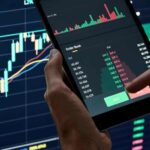The US has been an economic powerhouse for decades, pushing the frontiers of business, innovation, and investments worldwide. The pervasiveness of the culture and investment climate enabled the US wealth to expand at a rapid pace over the past decade as well.
The US national wealth climbed from $69 trillion to $153 trillion from 2012 to 2021, a 220% rate of increase, according to a research paper by YiLi Chein and Ashley Stewart, released on October 19.
Notably, the wealth data for the study obtained from the Financial Accounts of the US revealed the four main sectors used to define national wealth included: Household and nonprofit organizations, Noncorporate businesses, Corporate businesses, and Federal, state, and local governments. Tangible assets across these sectors were estimated at market value, signifying that changes in financial market conditions affected the pricing.
The research paper indicated that wealth and gross domestic product (GDP) comove tightly in stable economies, so wealth-to-GDP converges at a constant value. Any large variations are seen as major shifts in economic conditions.
US indicators
While between 1950 and 1995, the wealth-to-GDP ratio among the four sectors remained stable, varying between 3.5 and 4, a noticeable cyclical pattern was observed from the 1990s onwards, driven primarily by value changes of assets controlled by corporate businesses and households.
The first cycle from peak to trough played out from 1995 and lasted until 2002, driven by the value of the corporate business and is tied to the internet bubble of the 2000s. Further. the second cycle overlapped with the first, reaching a peak in 2006, and is tied to the 2008 housing crash.
Where are we now?
While the market power of US firms increased significantly in the past few years, especially following the Covid pandemic, one could pose the question of US technology companies being well accounted for by GDP. If not, the current GDP might be underestimated in the US.
As the research paper shows, a significant rise in the gap between wealth-to-GDP has led to bubbles and bubbles bursting, and the recent increase in the wealth-to-GDP ratio has been larger and more rapid than ever before. If another bubble has driven this, then inevitably, a recession will hit the US, but predicting a bubble is only possible after it has occurred.
Buy stocks now with Interactive Brokers – the most advanced investment platform
Disclaimer: The content on this site should not be considered investment advice. Investing is speculative. When investing, your capital is at risk.







